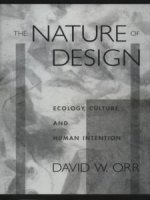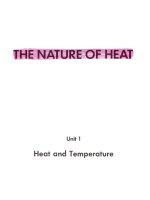The nature of product dervice
Bạn đang xem bản rút gọn của tài liệu. Xem và tải ngay bản đầy đủ của tài liệu tại đây (1.06 MB, 5 trang )
THE NATURE OF PROCESS DESIGN
A Creative Activity !
[ Example ]
CH3
+
Toluene
Toluene
(10,000 kg/h)
Hydrogen
(820 kg/h)
H2
+
Hydrogen
Reactor
Benzene
CH4
Methane
Gas
Separator
• Block Flow Diagram (BFD)
• Process Flow Diagram (PFD)
• Piping and Instrumentation Diagram (P&ID)
Mixed Gas
(2,610 kg/h)
Benzene
(8,210 kg/h)
Conversion
75% Toluene
The most effective way of
communicating information about
a process is through the use of
flow diagrams.
Table 1.1 Conventions and Format Recommended for Laying out a
Block Flow Process Diagram
Mixed Liquids
Toluene
Reaction : C7H8
+ H2 = C6H6 + CH4
Figure 1.1 Block flow process diagram for the production of benzene
Toluene and hydrogen are converted in a reactor to produce benzene and methane.The
1. Operations shown by blocks.
2. Major flow lines shown with arrows giving direction of flow.
3. Flow goes from left to right whenever possible.
4. Light stream (gases) toward top with heavy stream (liquids and solids) toward
bottom.
5. Critical information unique to process supplied.
6. If lines cross, then the horizontal line is continuous and the vertical line is broken.
7. Simplified material balance provided.
reaction does not go to completion, and excess toluene is required. The noncondensable
gases are separated and discharged. The benzene product and the unreacted toluene are
then separated by distillation. The toluene is then recycled back to the reactor and the
benzene removed in the product stream.
Process Flow Diagram (PFD)
A PFD includes the following items:
1. major equipments;
2. principal flow route and control involved from raw
material feed to final product;
3. key temperature and pressure corresponding to
anticipated normal operation;
4. material flow rates and compositions;
5. design duties and sizes of major equipments.
CuuDuongThanCong.com
/>
1
Table 1.2 Conventions Used for Identifying Process Equipment
Process Equipment
Supplemental Information
Table 1.3 Conventions for Identifying Process and Utility Streams
Process Streams
All conventions shown in Table 1.1 apply.
Diamond (square) symbol located in flow lines.
Numerical identification (unique for that stream) inserted in diamond (square).
Flow direction shown by arrows on flow lines.
lps
mps
hps
htm
cw
wr
rw
rb
cs
ss
el
ng
fg
fo
fw
Utility Streams
Low Pressure Steam: 3-5 barg (sat)‡
Medium Pressure Steam: 10-15 barg (sat)‡
High Pressure Steam: 40-50 barg (sat)‡
Heat Transfer Media (Organic): to 400°C
Cooling Water: From cooling tower 30°C returned at less than 45°C+
River Water: From river 25°C returned at less than 35°C
Refrigerated Water: In at 5°C returned at less than 15°C
Refrigerated Brine: In at -45°C returned at less than 0°C
Chemical Waste Water with high COD
Sanitary Waste Water with high BOD, etc.
Electric Heat (specify 220, 440, 660V service)
Natural Gas
Fuel Gas
Fuel Oil
Fuel Water
‡These
pressure are set during the preliminary design stages and typical values vary within the ranges
shown.
45°C, significant scaling occurs.
+Above
Table 1.6 Equipment Descriptions for PFD and P&IDs
Equipment Type
Description of Equipment
Towers
Size (height and diameter), Pressure, Temperature
Number and Type of Trays
Height and Type of Packing
Materials of Constructions
Heat Exchangers
Type: Gas-Gas, Gas-Liquid, Liquid-Liquid, Condenser, Vaporizer
Process: Duty, Area, Temperature, and Pressure for both streams.
No. of shell and Tube Passes
Materials of Construction: Tubes and Shell
Tanks
See vessels
Vessels
Hight, Diameter, Orientation, Pressure, Temperature, Materials of Construction
Pumps
Flow, Discharge Pressure, Temperature, rP, Driver Type, Shaft Power, Materials of Construction
Compressors
Actual Inlet Flow Rate, Temperature, Pressure, DrverType, Shaft Power,
Materials of Construction
Heaters (fired)
Type, Tube Pressure, Tube Temperature, Duty, Fuel, Material of Construction
Others
Provide Critical Information
CuuDuongThanCong.com
General Format XX-YZZ A/B
XX are the identification letters for the equipment
classification
C - Compressor or Turbine
E - Heat Exchanger
H - Fired Heater
P - Pump
R - Reactor
T - Tower
TK - Storage Tank
V - Vessel
Y designates an area within the plant
ZZ are the number designation for each item in an
equipment class
A/B identifies parallel units or backup units not
shown on a PFD
Additional description of equipment given on top
of PFD
Table 1.4 Information Provided in a Flow Summary
Essential Information
Stream Number
Temperature (°C)
Pressure (bar)
Vapor Fraction
Total Mass Flow Rate (kg/h)
Total Mole Flow Rate (kmol/h)
Individual Component Flow Rates (kmol/s)
Optional Information
Component Mole Fractions
Component Mass Fractions
Individual Component Flow Rates (kg/h)
Volumetric Flow Rates (m 3/h)
Significant Physical Properties
Density
Viscosity
Other
Thermodynamic Data
Heat Capacity
Stream Enthalpy
K-values
Stream Name
Piping and Instrumentation Diagram
(P&ID)
1. All process equipments and pipings required for start-up, shut-down, emergency and
normal operation of the plant, including valves, blinds, etc.
2. An id number, an identifier of the material of construction, diameter and insulation
requirements for each line.
3. Direction of flow.
4. Identification of main process and start-up lines.
5. All instrumentation, control and interlock facilities with indication of action on
instrument air failure.
6. Key dimensions or duties of all equipments.
7. Operating and design pressures and temperatures for vessels and reactors.
8. Equipment elevations.
9. Set pressure for relief valves.
10.Drainage requirements.
11.Special notes on piping configuration as necessary, e.g. “gravity drainage.”
/>
2
Table 1.8 Exclusions from Piping and Instrumentation Diagram
1. Operating conditions T,P
2. Stream flows
3. Equipment locations
4. Pipe routing
a. Pipe lengths
b. Pipe fittings
5. Supports, structures, and foundations
Table 1.9 Conventions in Constructing Piping and Instrumentation Diagrams
For Equipment - Shown Every Piece Including
Spare units
Parallel units
Summary details of each unit
For Piping - Include All Lines Including Drains, Sample Connections and Specify
Size (use standard sizes)
Schedule (thickness)
Materials of construction
Insulation (thickness and type)
For Instruments - Identify
Indicators
Recorders
Controllers
Show instrument lines
For Utility - Indentify
Entrance utilities
Activities of Process Design
(1)Synthesis
The step where one conjectures the building blocks and their
interconnections to create a structure which can meet the stated design
requirements.
(2)Analysis (Simulation)
The activity of modeling and then solving the resulting equations to
predict how a selected structure should behave if it were constructed.
(3)Evaluation
The activity of placing a worth on the structure where the worth might
be its cost, its safety, or its net energy consumption.
(4)Optimization
The systematic searching over the allowed operating conditions to
improve the evaluation as much as possible.
Parameter
structure
Exit utilities
Exit to waste treatment facilities
Process Synthesis
IMPORTANCE OF PROCESS STRUCTURE
(1) Recycle?
A→P
R
A design task where one conjectures the
building blocks and their interconnections to
create a structure which can meet the stated
design requirements.
or
R
A
P
A
S
P
(2)separation Sequence ?
A (propane)
A
B (1-Butene)
A
AB
or
ABC
BC
C(n-Butane)
B
ABC
C
C
B
C
(3)Heat Recovery ?
or
H
CuuDuongThanCong.com
/>
3
Feed
Streams
Product
Streams
PROCESS ?
(a) Process design starts with the synthesis of a process to convert raw
Figure 1.6 The “onion model” of
process design. A reactor design in
needed before the separation and recycle
system can be designed, and so on.
(From Smith and Linnhoff, Trans.
IChemE, ChERD, 66:195, 1988;
reproduced by permission of the
Institution of Chemical Engineers.)
materials into desired products.
Reactor
Feed
Streams
Product
Streams ?
PROCESS
Separation and
Recycle System
Heat Exchanger
Network
(b) Simulation predicts how a process would behave if it was constructed.
Figure 1.1 Synthesis is the creation of a process to transform feed streams
into product streams. Simulation predicts how it would behave if it was
constructed.
Utilities
A HIERARCHICAL APPROACH
Example Hydrodealkylation of Toluene
CH3
1
+ CH4
+ H2
Toluene
Benzene
2
+ H2
Benzene
Toluene + H2 ® Benzene + CH4
Diphenyl
2 Benzene
Diphenyl + H2
1150 ° F ~ 1300 ° F
500 psia
Vapor Recovery System
H2 Feed
H2, CH4
Benzene
product
Flash
hh
FIGURE 1.2-2
Hydrodealkylation of toluene; maximum energy recovery.
ENERGY INTEGRATION
Stablizer
CW
Benzene Col.
Gas
recycle
Reactor
CuuDuongThanCong.com
Toluene
Recycle
Toluene Col.
furnace
Flash
Drum
Benzene
compressor
Diphenyl
Reactor
Toluene
Feed
Purge
Purge
compressor
Liquid
recycle
H2, feed
Toluene
feed
Diphenyl
Distillation Train
/>
4
ALTERNATIVES OF DISTILLATION TRAIN
(1) Recycle Diphenyl
H2, CH4
Benzene
(2)
Feed
ALTERNATIVES OF VAPOR RECOVERY
SYSTEM
Toluene
(recycle)
Diphenyl
(3)
H2
CH4
(1) Condensation;
Benzene
(2) Absorption;
Toluene
(recycle)
(3) Adsorption;
(4) Membrane.
Diphenyl
Gas recycle
Vapor recovery
system
H 2 , CH 4
H 2 , CH 4
H 2 , CH 4
Reactor
system
Purge
H 2 , CH 4
Purge
Phase
split
Toluene
Benzene
Reactor
system
Separation
system
Dipheny1
Toluene
Liquid separation
system
Benzene
Toluene recycle
Dipheny1
Simplified Flowsheet for the Separation System
Purge
H 2 , CH 4
Recycle Structure of the Flowsheet
Hierarchy of decisions
1. Batch versus continuous
2. Input-output structure of the flowsheet
H 2 , CH 4
Benzene
Toluene
Dipheny1
3. Recycle structure of the flowsheet
4. General structure of the separation system
a. Vapor recovery system
b. Liquid recovery system
5. Heat-exchanger network
Ch. 4
Ch.5
Ch.6, Ch.7, Ch.16
Input-Output Structure of the Flowsheet
CuuDuongThanCong.com
/>
5









